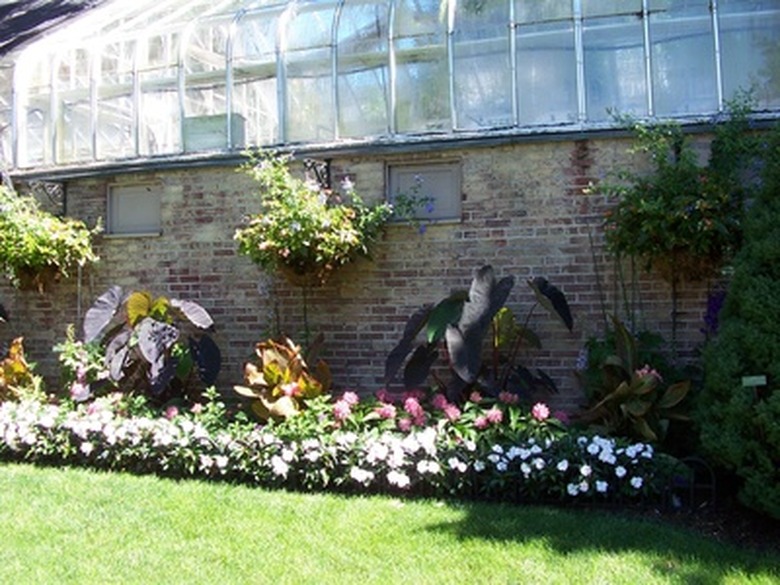Pest Screening For Vegetable Gardens
In much the same way that a screen door can prevent bothersome insects from entering your house, screens of various types can keep munching monsters out of your vegetable garden. Common insects that can attack your vegetable plants and forming fruit include aphids, scale, mealy bugs, thrips, whiteflies, spider mites, snails and slugs. If you cover your plants, or entire rows, with screen made for the garden, these uninvited guests will stay away.
Types of Screen
You can use the screen from an old window screen or screen door or you can use a product known as floating row cover, or Reemay, to help keep insects away from your vegetable plants. If you use old window screen, make certain it is not torn or damaged in any way that might allow insects to enter through the screen. Floating row cover was invented around 1980 and is marketed under the name Reemay. It is a white polyester fiber that allows water and sunlight to enter while prohibiting insects from entering.
- In much the same way that a screen door can prevent bothersome insects from entering your house, screens of various types can keep munching monsters out of your vegetable garden.
- You can use the screen from an old window screen or screen door or you can use a product known as floating row cover, or Reemay, to help keep insects away from your vegetable plants.
Covering One Plant
Floating row cover is more flexible and easier to gather into a bunch than window screen or other types of screen. If you need to cover just one vegetable plant, drape your floating row cover over the plant and then use green nursery tape to tie it securely at the plant's base. You can also bag individual vegetables, such as tomatoes or zucchini, by wrapping them in a generous amount of floating row cover and tying them securely at their stems. This will allow bees to pollinate flowers on the same plant.
Building a Cover for Multiple Plants
Screen or floating row cover can easily protect an entire row of small vegetable plants such as lettuce. Cut lengths of stiff wire, such as hog wire, large enough to form a hoop over your row of plants. Use as many of these hoops as necessary to cover the length of your row. Poke the cut ends into the soil on either side of your row and then drape floating row cover or screen over the top. This method works best for plants such as lettuce and other greens that do not require pollination to form fruit.
- Floating row cover is more flexible and easier to gather into a bunch than window screen or other types of screen.
- Cut lengths of stiff wire, such as hog wire, large enough to form a hoop over your row of plants.
Covering Large Plants
If you have large plants that need protection, such as a large bed of tomatoes, you can build a more elaborate frame and cover it with floating row cover or screen. Use 2-by-2 boards and connect them to form a box that is tall enough and wide enough to sit over the entire bed. Place your frame over your garden bed and then attach floating row cover or screen over the top and sides, stapling or tying it securely so as to prevent insects from entering.
Covering a Cold Frame
If you need to protect seedlings from both frost damage and insect attacks, a cold frame is a handy item. Typically, cold frames have glass or plastic on top of a hinged roof, but you can use screen if you don't need to create a warm environment for your plants. Build a box of whatever size you need: it can be as small as 12 by 12 inches or much larger. Allow for the height of your plants and make it tall enough to accommodate them. Then attach screen to the roof section and keep the top down except when you need to thin or harvest your plants.
- If you have large plants that need protection, such as a large bed of tomatoes, you can build a more elaborate frame and cover it with floating row cover or screen.
- Then attach screen to the roof section and keep the top down except when you need to thin or harvest your plants.
